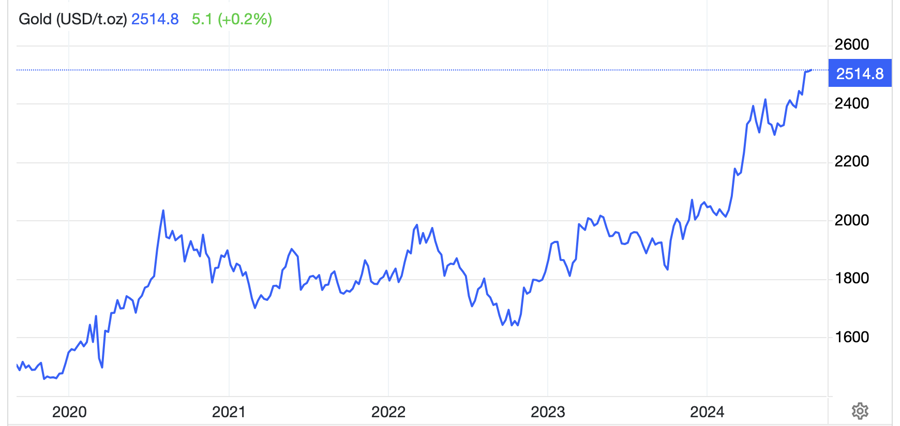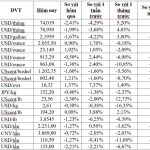Global gold prices remain firmly above $2,500 per ounce, not far from their all-time high, as expectations build for a potential rate cut by the US Federal Reserve in less than a month. A major American bank has recommended investors buy gold, highlighting the continued central bank purchases and the metal’s strong performance this year.
As of Monday’s (Aug 26) close in New York, spot gold prices rose by $5.5 per ounce from Friday’s close, or 0.22%, to $2,518.6 per ounce, according to Kitco data. In August, spot gold prices peaked at nearly $2,532 per ounce.
As of early Tuesday morning Vietnam time, spot gold prices in Asia fell by $2.1 per ounce from the US close, or 0.08%, to trade at $2,516.5 per ounce. Converted at Vietcombank’s selling exchange rate, this is equivalent to about VND 75.9 million per tael, a decrease of VND 200,000 per tael compared to Monday morning. The main reason for the decrease in world gold prices is the strong depreciation of the VND against the USD in the global market.
According to Peter A. Grant, senior strategist at Zaner Metals, soft signals from Fed Chairman Jerome Powell’s speech on Friday and risk hedging due to geopolitical tensions in the Middle East are driving investors to hold gold.
In his speech at the Fed’s annual symposium in Jackson Hole last week, Powell laid the groundwork for a shift towards monetary easing. Although he did not provide any indication of the timing or magnitude of a rate cut, the FedWatch Tool from CME Group shows that the market is betting on a 100% chance of a rate cut on September 18, with odds of a 0.25 percentage point reduction at 68% and a 0.5 percentage point cut at 32%.
In the Middle East, Hezbollah militants fired hundreds of rockets and drones into Israel on Sunday. Meanwhile, efforts to negotiate a ceasefire for the Gaza Strip have not yet yielded results.
“In the short term, the next target for gold prices is $2,539.77 per ounce, followed by $2,597.15 per ounce,” Grant added. “China may return to buying gold, but even if it doesn’t, central bank demand in general remains relatively strong despite the high gold prices this year. The trend of central banks buying gold will continue.”
Demand for gold in the two largest physical gold consuming countries, China and India, has weakened recently due to record-high prices. However, experts believe that demand in these two countries may improve in the coming months.

In a recently published report, Bank of America (BOA) stated that gold has been the best-performing asset this year, with a year-to-date gain of about 20%. This outperforms the 17.7% return of cryptocurrencies, the 15.4% gain in US stocks, the 1.9% gain in basic commodities, the 0.6% gain in government bonds, and the 0.2% gain in the US dollar.
BOA also cited data from the US Commodity Futures Trading Commission (CFTC) showing that American investors are net buyers of gold, and speculative positions in gold futures on US commodity exchanges are at their highest level in four years.
The BOA report also suggested that investors will continue to flock to gold as selling pressure in the stock market mounts. The bank’s analysts do not expect the S&P 500 to benefit when the Fed starts cutting rates next month, and believe that a stock market sell-off is inevitable.

















